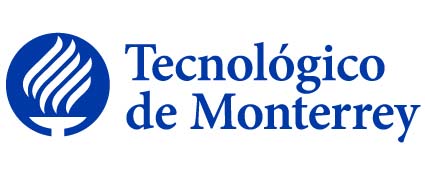
|
Curso con proyecto. Curso en el que se recomienda incorporar el uso de tecnologías de información. |
|||||
|
|||||
Disciplina asociada:Humanidades |
|||||
Escuela:
Humanidades y Educación
|
|||||
Departamento Académico:
Medios y Cultura Digital
|
|||||
Programas académicos: |
|||||
Requisitos:No tiene. |
|||||
Equivalencia:H2000 |
|||||
Intención del curso en el contexto general del plan de estudios: |
|||||
|
Curso de nivel básico del área de formación musical, cuya intención es introducir al alumno en el estudio de la teoría musical. Dicho término engloba el análisis armónico, análisis de forma, y reconocimiento auditivo rítmico, melódico, armónico y de texturas. No requiere conocimientos previos. Como resultado de aprendizaje, el alumno desarrollará la habilidad de reconocimiento y uso de los elementos del lenguaje musical en ejercicios y composiciones asignadas para el curso. |
|||||
Objetivo general de la Unidad de Formación: |
|||||
|
Al finalizar el curso el alumno podrá leer partituras, entonar melodías y realizar composiciones y/o arreglos musicales simples, realizar un análisis general de ejemplos musicales desde los puntos de vista melódico, rítmico y armónico. |
|||||
Técnica didáctica sugerida: |
|||||
| Aprendizaje colaborativo | |||||
Bibliografía sugerida: |
|||||
|
LIBROS DE TEXTO: * Takesue, Sumy., Music fundamentals : a balanced approach, , New York : Routledge, 2010, , 0415873371 (encuadernado : papel alcalino), 0415997240 (ru´stica : papel alcalino), 9780415873376 (encuadernado : papel alcalino), 9780415997249 (ru´stica : papel alcalino) LIBROS DE CONSULTA: * Abromont, Claude., Teoría de la música : una guía , , México : FCE, 2005, , 9681673638 |
|||||
Perfil del Profesor: |
|||||
|
(500901)Maestría en Música ; (500901)Doctorado en Música CIP: 500901 |
|||||
|
Course with project. Course in which it’s recommended to incorporate the use of information technologies. |
|||||
|
|||||
Discipline:Humanities |
|||||
School:
Humanities and Education
|
|||||
Academic Department:
Digital Media and Culture
|
|||||
Programs: |
|||||
Prerequisites:None. |
|||||
Equivalences:H2000 |
|||||
Course intention within the general study plan context: |
|||||
|
The purpose of this basic-level music-education course is to introduce students to the study of music theory. This term encompasses harmonic analysis, form analysis, and auditory, rhythmic, melodic and texture recognition. No previous knowledge is required. The learning outcome of this course is for students to develop the ability to recognize and use the elements of musical language in exercises and compositions assigned as part of the course. |
|||||
Course objective: |
|||||
|
Upon completion of this course, students will be able to read scores, sing melodies and create simple musical compositions and/or arrangements; and perform a general analysis of musical pieces from the viewpoints of melody, rhythm and harmony. |
|||||
Teaching and learning tecniques: |
|||||
| Collaborative learning | |||||
Suggested Bibliography: |
|||||
|
TEXT BOOKS: * Takesue, Sumy., Music fundamentals : a balanced approach, , New York : Routledge, 2010, , 0415873371 (encuadernado : papel alcalino), 0415997240 (ru´stica : papel alcalino), 9780415873376 (encuadernado : papel alcalino), 9780415997249 (ru´stica : papel alcalino) BOOKS FOR CONSULTATION: * Abromont, Claude., Teoría de la música : una guía , , México : FCE, 2005, , 9681673638 |
|||||
Academic credentials required to teach the course: |
|||||
|
(500901)Master Degree in Music and (500901)Doctoral Degree in Music CIP: 500901 |
|||||